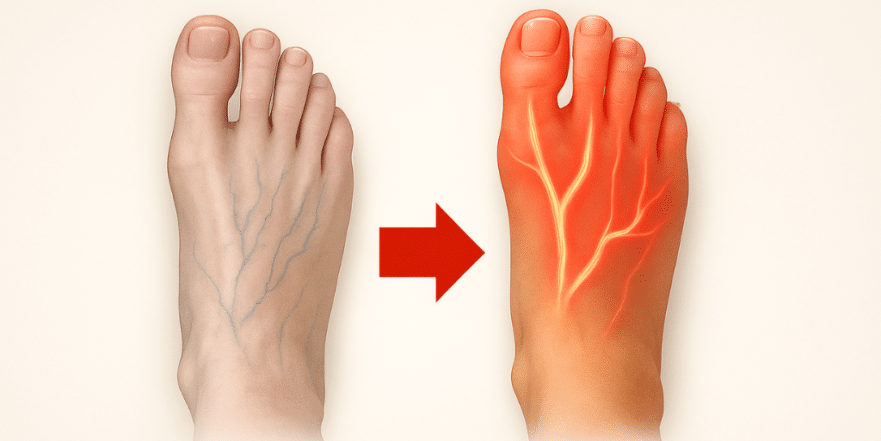
Today, I want to talk to you about the best foods for improving your venous circulation. This is a bigger deal than you might think. More than half of all people suffer from heavy legs, swelling, and varicose veins. And while we hear a lot about cholesterol and arteries, there’s a deeper problem many people overlook: the inflammation that damages your veins from the inside out. The shocking part is that some foods that seem healthy are actually making everything worse.
In this article, we’re going to uncover six foods that genuinely improve your venous return and reveal the false allies you need to remove from your diet for good. You’ll learn why the way you prepare a food can turn it from medicine into poison, and how simple, humble ingredients can have a profound impact on how you feel. Your veins are the highways of your body, and it’s time to clear up the traffic jams. (This article draws on the expertise of Dr. Iñigo Martín)
Key Takeaways
- Focus on Anti-Inflammatory Foods: The root cause of many venous issues is chronic inflammation. Foods rich in polyphenols, healthy fats, and fiber can calm this inflammation and protect your vein walls.
- Blood Sugar is Crucial: Foods that spike your blood sugar, like refined flours and sugar, directly damage the delicate lining of your veins, making them stiff and inefficient. Prioritize low-glycemic foods.
- Avoid Hidden Enemies: Processed foods are often loaded with trans fats, oxidized oils, and excessive salt, which thicken your blood, increase pressure, and sabotage your circulatory health.
- Preparation Matters: How you prepare your food is just as important as what you eat. Soaking legumes and nuts, using olive oil raw, and choosing whole grains over processed versions unlocks their full benefits.
6. Oats: The Internal Cleanser

One of the most overlooked foods for circulation is oatmeal. This humble cereal provides you with energy that lasts for hours, unlike toast with jam that leaves you hungry by mid-morning. Why the difference? Oats contain a special fiber called beta-glucan, which forms a thick gel in your intestine. You can think of this gel as a sticky net that traps bad cholesterol before it even reaches your bloodstream. The result is less viscous blood that flows more easily through your veins.
This same gel slows down how you absorb sugar. Instead of a rapid spike that damages the walls of your veins, you get a slow, steady release of energy. Your veins don’t suffer from those sugar surges that inflame them from within. And here’s something few people know: when the good bacteria in your gut digest this fiber, they produce short-chain fatty acids. This is important for you because these compounds travel through your blood and calm inflammation throughout your entire body, including in your veins. However, preparation is key. Whole or thick-rolled oats keep this fiber intact. You can soak them overnight with a bit of cinnamon and walnuts to activate the nutrients. But beware of the instant versions from the supermarket. They are so processed that they lose all the beta-glucan and often come with added sugar that negates all the benefits. You’re essentially paying for poison disguised as health.
5. Dark Chocolate (85%+): The Vein-Relaxing Treat
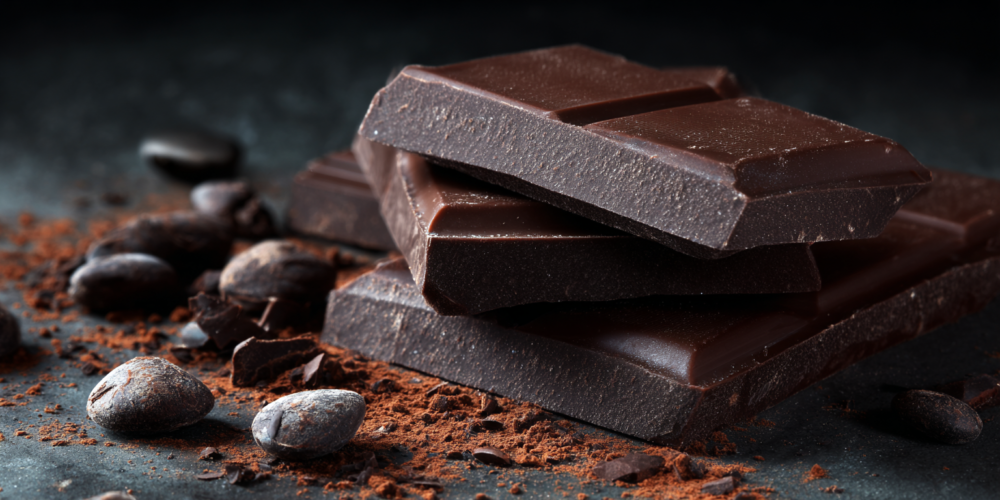
While oats work from the inside to clean your blood, there’s a guilty pleasure that holds a secret for your veins: dark chocolate. I’m talking about the kind with over 85% cacao, not the sugar-filled milk chocolate you find in any store. Why does this difference matter so much? Pure cacao contains compounds called flavonoids that do something extraordinary in your body. They travel through your blood and trigger the production of nitric oxide. Nitric oxide is the messenger that tells your blood vessels to relax and open up.
It’s like opening a faucet all the way to let more water flow through. The effect is almost immediate. About half an hour after eating just two squares of dark chocolate, your vessels are already more dilated, and blood flows with less resistance. But there’s more. The flavonoids in cacao also strengthen the walls of your veins. You can grate dark chocolate over your morning oatmeal or have two squares after lunch with a handful of walnuts. The combination with healthy fats enhances the absorption of flavonoids, especially in the tiny capillaries of your feet and hands where circulation often fails first. So, if you notice tingling or coldness in your extremities, dark chocolate can help. Just remember, the cacao percentage is crucial. Below 70%, the sugar content simply cancels out the benefits. And milk chocolate is even worse; the milk proteins can block the absorption of the very flavonoids you’re trying to get.
4. Legumes: The Slow-Burn Energy Source
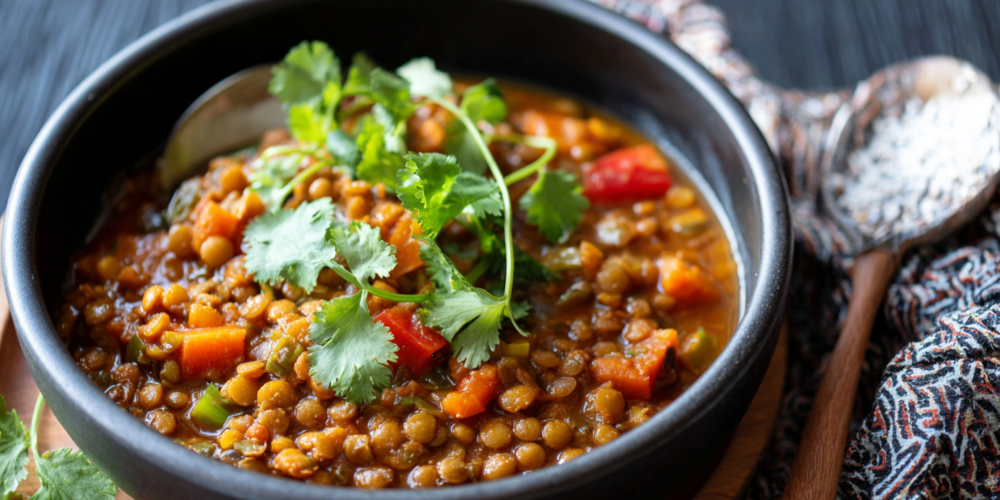
If refined flours are a direct assault on your veins, a humble group of foods does the exact opposite: lentils, chickpeas, and beans. The soluble fiber in legumes is unlike any other. When you eat a plate of lentils, that fiber forms a gelatinous mass in your intestine. This mass acts like a broom, sweeping your system from the inside, dragging away toxins, bad cholesterol, and everything that thickens your blood.
But what truly protects your veins is their low glycemic index. A plate of chickpeas releases its energy so slowly that your blood sugar barely rises. The result? No spikes, no blows to your circulation—just steady energy for hours. Furthermore, legumes are loaded with potassium. Half a cup of white beans has more potassium than a banana, and this mineral is the natural enemy of fluid retention. While sodium makes you retain water and causes your legs to swell, potassium opens the floodgates, helping your kidneys eliminate excess fluid. The age-old practice of soaking them overnight isn’t just a whim. When you soak lentils or chickpeas, you neutralize the anti-nutrients that block mineral absorption and activate enzymes that make digestion easier. A great trick is to cook a large pot on Sunday and store portions in the fridge. This way, you have legumes ready to add to salads, soups, or as a side dish. Four or five tablespoons per meal are enough to notice the benefits.
3. Avocado: The Creamy Protector
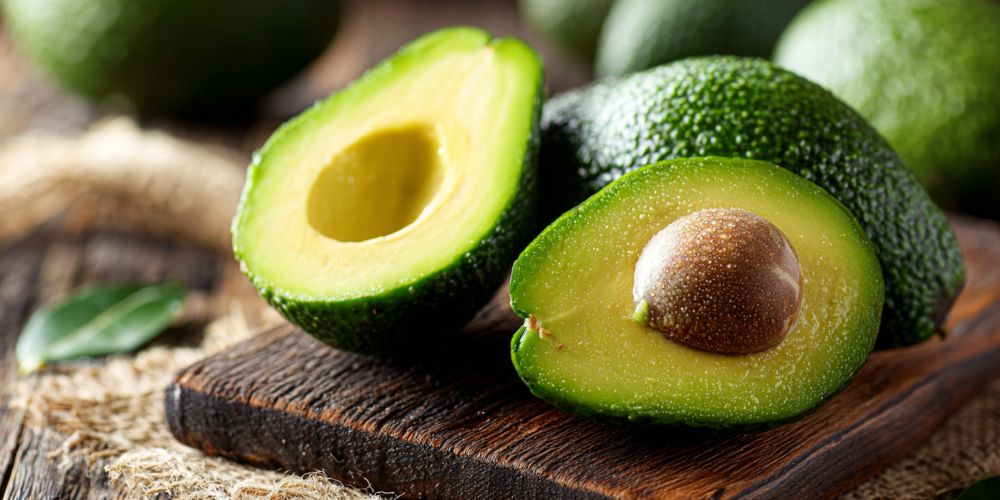
Many people avoid this creamy fruit because of its fat content, but the avocado is filled with monounsaturated fat—the same type you find in olive oil. This fat does something extraordinary for your blood: it keeps it fluid and smooth, like oil running effortlessly. It’s the exact opposite of the thick sludge created by bad fats. When you eat half an avocado a day, those good fats enter your bloodstream and integrate into your cell membranes, making them more flexible and able to bend through the smallest capillaries. Your blood flows better to every corner of your body.
Furthermore, the cells that line the inside of your blood vessels need these monounsaturated fats to stay healthy. Without them, they become weak and permeable. With them, they form a strong barrier that protects your veins. An avocado also contains a significant amount of the vitamin E you need daily. Every day, free radicals attack the walls of your blood vessels, but vitamin E neutralizes them before they can do damage. And here’s a fact that will completely change how you eat your salads: avocado multiplies the absorption of other vein-protecting nutrients. When you eat carrots, spinach, or tomatoes, they contain carotenoids that protect your vessels. But these nutrients need fat to be absorbed. We now know that adding avocado to a salad increases carotenoid absorption by up to 15 times. That’s the difference between just eating vegetables and actually using their nutrients.
2. Chili Peppers: The Instant Circulation Booster
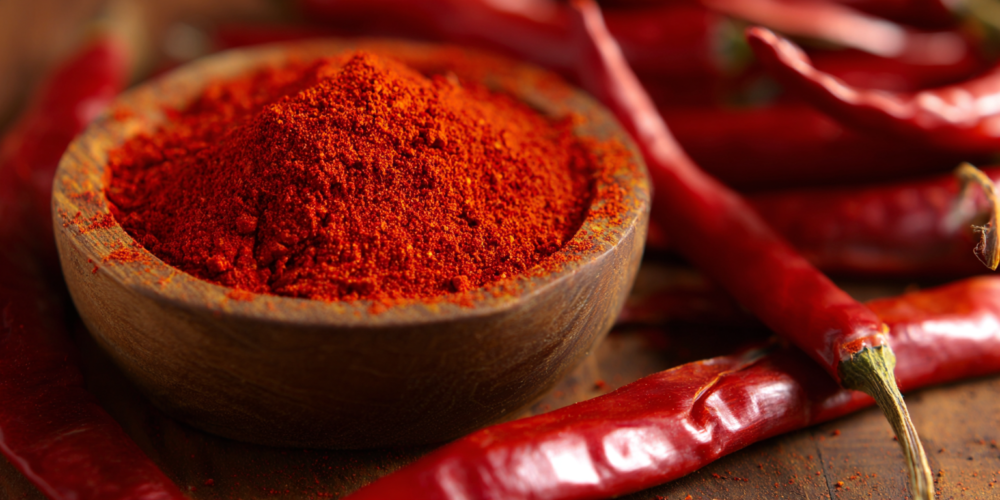
While avocado works gradually, there’s something that can activate your circulation almost instantly: the chili pepper. When you eat it, that warming sensation you feel is your circulatory system waking up completely. The secret lies in a compound called capsaicin, which is what makes chili peppers hot. Capsaicin acts as a potent vasodilator, directly widening your blood vessels. It opens all the highways in your body at the same time. Blood that was struggling to circulate now flows freely, and you can feel it in minutes.
First, you notice the heat in your mouth, then it spreads to your chest, and finally, it reaches your extremities. Those cold hands suddenly have warm blood circulating through them. Those icy feet start to warm up. This is your circulation working as it should. The effect on heavy legs is almost immediate. When capsaicin dilates the vessels in your legs, stagnant blood starts to move, relieving that feeling of weight. Surprisingly, despite the heat you feel, capsaicin has a profound anti-inflammatory effect. It calms the inflammation that damages your veins from within. It’s a paradox: it warms you on the outside while cooling you on the inside. You don’t need to eat whole chilies to get these benefits. A pinch of cayenne pepper in your food is enough. You can add it to soups, stews, or even your morning green smoothie if you’re brave. The effect is cumulative; small, consistent doses are better than a habanero once in a while.
1. Extra Virgin Olive Oil: The Liquid Gold for Your Veins
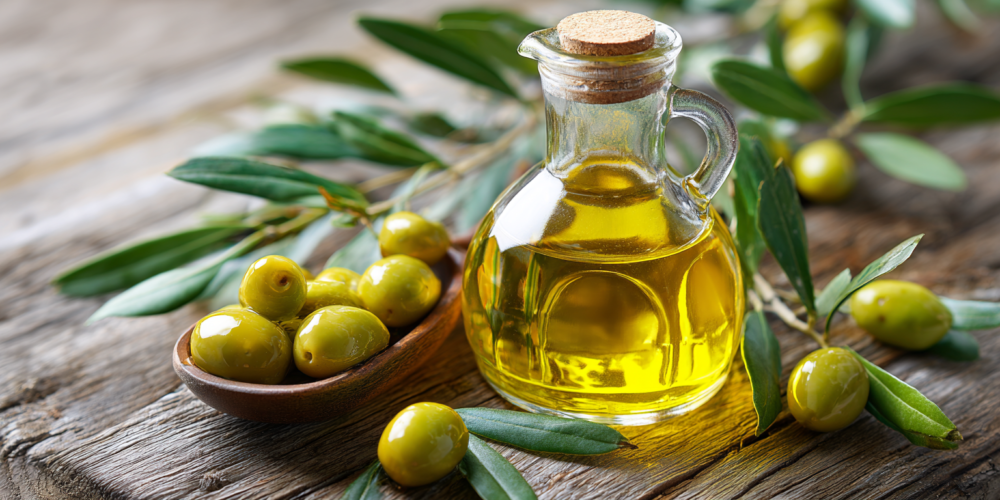
Finally, we arrive at the liquid gold of the Mediterranean, the most complete protector of your veins: extra virgin olive oil. This oil is much more than a healthy fat; it’s a cocktail of protective compounds that work together to keep your veins strong and flexible. The polyphenols in olive oil are unique; you won’t find them in any other oil. These compounds adhere to the inner lining of your veins, forming an invisible protective layer. They essentially paint the inside of your vessels with a varnish that shields them from damage. This lining does something crucial: it prevents bad cholesterol from oxidizing and sticking to your vein walls.
The real treasure in olive oil is a compound called oleocanthal. This natural anti-inflammatory is so potent that it works similarly to ibuprofen. That peppery sensation in the back of your throat when you taste good olive oil? That’s the oleocanthal at work. If it doesn’t have that kick, it doesn’t have enough. Quality changes everything. Look for extra virgin, first cold-pressed olive oil in a dark bottle to protect it from light. It works best raw—drizzled over a salad, on cooked vegetables, or mixed with lemon as a dressing. If you cook with it, use low to medium heat and never let it smoke. A great ritual is to take one tablespoon of extra virgin olive oil with a few drops of lemon juice on an empty stomach in the morning. Your body absorbs the polyphenols better, and the lemon helps emulsify the oil for even better absorption.
The Enemies of Your Circulation
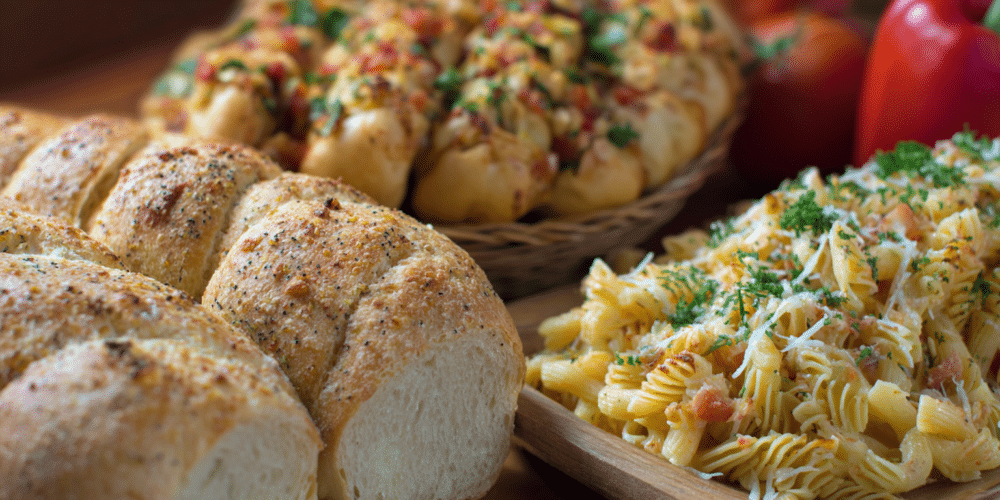
Now that you know the heroes, you must learn to spot the villains. These three are sabotaging your efforts without you even realizing it.
- Refined Flours: That white bread for breakfast, the pasta for lunch, the crackers for a snack—they seem harmless, but in your body, they behave like pure sugar. The refining process strips away all the fiber, leaving only naked starch that hits your bloodstream at full speed. Your body doesn’t know the difference between a slice of white bread and a spoonful of sugar. This rollercoaster of glucose and insulin damages the inner lining of your veins, making them rigid and less elastic over time.
- Processed Nuts and Seeds: Raw nuts are nutritional powerhouses. But the roasted, salted nuts in packages at the supermarket are a trap. They are often roasted at extremely high temperatures with cheap vegetable oils (sunflower, soy), which oxidizes the delicate good fats, turning them into rancid, inflammatory compounds. Then they are bathed in salt, which causes fluid retention and increases pressure in your veins.
- Trans Fats: This is probably the most harmful legal substance you can put in your body. Created in a lab by bombarding vegetable oil with hydrogen, your body has no idea how to process it. Trans fats make your blood thicker and stickier, like pouring molasses into your pipes. They embed themselves in your vein walls, making them rigid. You’ll find them in industrial pastries (donuts, cookies), fast food (fries, nuggets), and many processed snacks. Always read labels and avoid anything that says “partially hydrogenated oil.”
Conclusion
With this, you have a complete map to better circulation. You’ve seen the powerful allies like oats, dark chocolate, legumes, and avocado. You’ve also uncovered the hidden enemies like refined flours and trans fats. By making these simple swaps, you are giving your body the tools it needs to maintain a healthy, free-flowing circulatory system. Remember, however, that nutrition is just one piece of the puzzle. Daily movement, elevating your legs when you rest, and avoiding long periods of standing or sitting all work together with these foods to keep your veins in top condition. Start with one or two changes, and you’ll begin to feel the difference.
Source: Dr. Iñigo Martín

